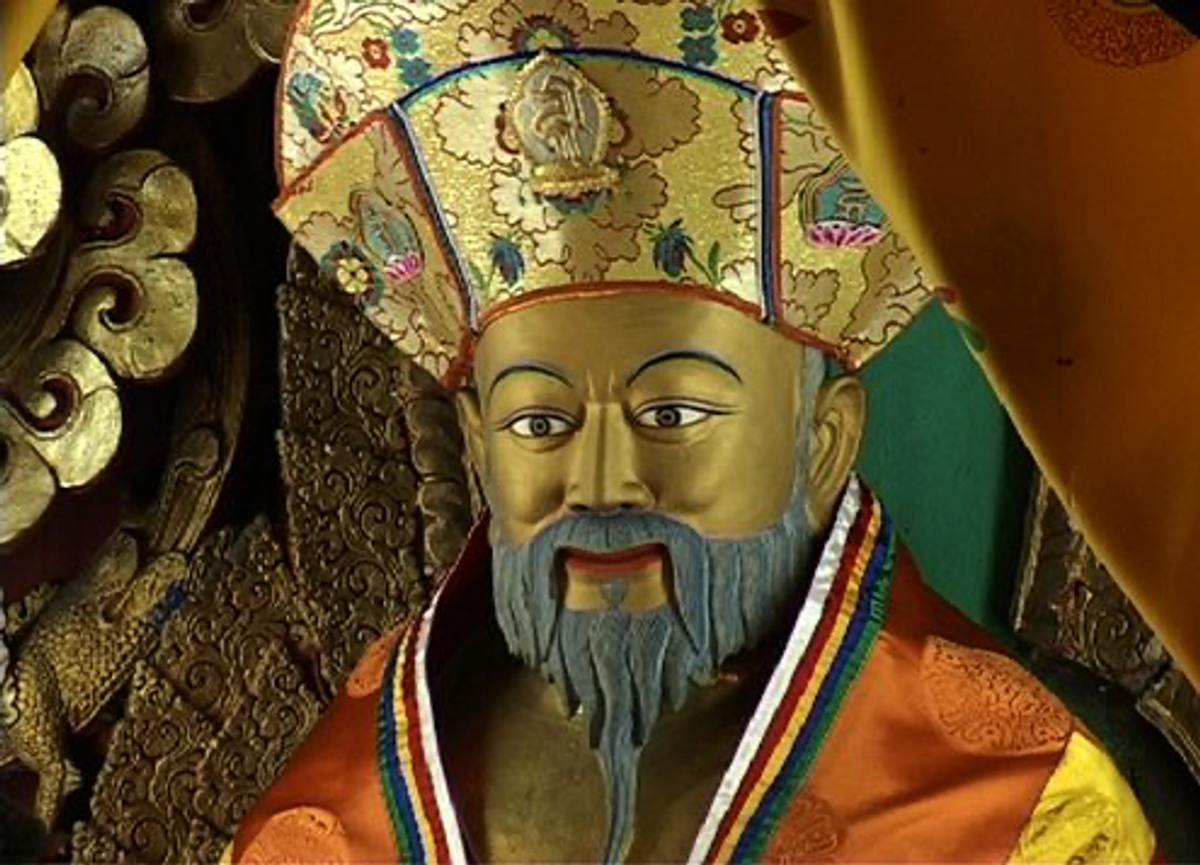The nation of Bhutan was founded in the 17th century by Zhabdrung (meaning “at whose feet one submits”) Ngawang Namgyal, a Tibetan Buddhist lama, known colloquially as the Bearded Lama.
Zhabdrung Ngawang Namgyal was born into a royal family in Tibet in 1594. Despite being enthroned as the hereditary prince, his throne was usurped by a rival who claimed the right to rule. Ngawang Namgyal left Tibet and founded a new base in western Bhutan. Over the coming years, his power over the region increased and in 1634, Ngawang Namgyal won a decisive victory in the Battle of Five Lamas uniting Bhutan into a single country for the first time in history.
Ngawang Namgyal died in 1651. Fearing that news of his death and arguments over his succession would plunge Bhutan back into a time of tribal warlords and undo his efforts to unite the country, the local governors kept his death a secret for 54 years, giving the excuse that he was on a long silent retreat.
Until the start of the 20th century, Bhutan was ruled under the Tibetan dual system of government led by the Zhabdrung – reincarnations of the mind, body and speech of Ngawang Namgyal.
